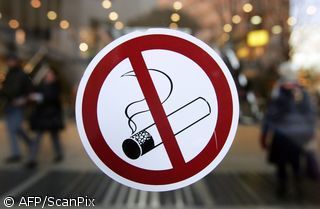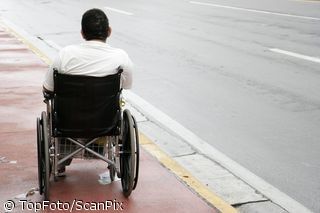Despite all the fears and conspiracy theories, the conclusion is ``inescapable'' that an explosion of vapors in a fuel tank is what brought down TWA Flight 800 four years ago.
Published:
23 August 2000 y., Wednesday
Despite all the fears and conspiracy theories, the conclusion is ``inescapable'' that an explosion of vapors in a fuel tank is what brought down TWA Flight 800 four years ago at a loss of 230 lives, a top federal investigator concluded Tuesday.
Investigators ``cannot be certain'' what ignited the blast, but the most likely cause was an electrical short in wiring inside the tank, said Bernard S. Loeb, aviation safety director of the National Transportation Safety Board.
The physical evidence, he said, ``leads to the inescapable conclusion'' that the plane was brought down by a fuel-air explosion inside the center wing tank.
As the meeting wore on, Robert Swaim of the aviation engineering section expressed the frustration of investigators seeking the source of ignition. ``I would love to walk in here with a molten piece of wire and say, 'Here it is,''' he said.
Loeb said there was no evidence that metal fatigue, corrosion, recent repairs of the plane, a bomb or a missile was involved in the disaster off the coast of New York's Long Island.
The Boeing 747 crashed on July 17, 1996, shortly after taking off from John F. Kennedy Airport in New York en route to Paris.
Investigator James Wildey of the NTSB's materials laboratory explained that the explosion originated in the huge fuel tank located where the wing spars pass through the plane's center. The tank was partly empty and air conditioners located beneath the tank had given off heat, warming the fuel during a long wait for takeoff.
Šaltinis:
AP
Copying, publishing, announcing any information from the News.lt portal without written permission of News.lt editorial office is prohibited.
The most popular articles
 Ensuring that women are protected from physical, sexual or psychological abuse if they flee abroad is what lies behind the proposed European Protection Order.
more »
Ensuring that women are protected from physical, sexual or psychological abuse if they flee abroad is what lies behind the proposed European Protection Order.
more »
 Remnants of Tropical Storm Agatha dumped more rain across Central America, killing at least 73 people in the region, and forcing scores of others to flee their homes.
more »
Remnants of Tropical Storm Agatha dumped more rain across Central America, killing at least 73 people in the region, and forcing scores of others to flee their homes.
more »
 Ninety-three-year old Lim Guan Siew looks back, with regret, on her experience of the long-dispelled Chinese custom of foot-binding.
more »
Ninety-three-year old Lim Guan Siew looks back, with regret, on her experience of the long-dispelled Chinese custom of foot-binding.
more »
 Ahead of the 2010 No Tobacco Day (Monday 31st May), the European Commission unveils the results of a Eurobarometer survey which shows that a strong majority of EU citizens support stronger tobacco control measures.
more »
Ahead of the 2010 No Tobacco Day (Monday 31st May), the European Commission unveils the results of a Eurobarometer survey which shows that a strong majority of EU citizens support stronger tobacco control measures.
more »
 Enviromentalist and endurance swimmer Lewis Pugh puts his body to the test in thin air and cold water to highlight shrinking glaciers in high mountain ranges.
more »
Enviromentalist and endurance swimmer Lewis Pugh puts his body to the test in thin air and cold water to highlight shrinking glaciers in high mountain ranges.
more »
 It’s a dog’s life for the 1,500 unwanted strays who spend their days in a slum-like shelters in Brazil’s southern city of Caxias do Sul.
more »
It’s a dog’s life for the 1,500 unwanted strays who spend their days in a slum-like shelters in Brazil’s southern city of Caxias do Sul.
more »
 Three resolutions on the situation in Thailand, the pre-election climate in Burma and religious freedom in Pakistan were adopted by the European Parliament in Strasbourg on Thursday.
more »
Three resolutions on the situation in Thailand, the pre-election climate in Burma and religious freedom in Pakistan were adopted by the European Parliament in Strasbourg on Thursday.
more »
 Growing numbers of children enroll in kung-fu schools to learn self-defense techniques after a series of school attacks in recent weeks spark wide-spread concern in China.
more »
Growing numbers of children enroll in kung-fu schools to learn self-defense techniques after a series of school attacks in recent weeks spark wide-spread concern in China.
more »
 Homosexuality in the military can be a thorny issue around the world, with gay and lesbian soldiers often hiding their sexual preference out of fear.
more »
Homosexuality in the military can be a thorny issue around the world, with gay and lesbian soldiers often hiding their sexual preference out of fear.
more »
 European Commission Vice-President Viviane Reding will urge EU Member States to swiftly ratify the UN Convention on the Rights of Persons with Disabilities during a May 19 Ministers’ meeting in Zaragoza, Spain.
more »
European Commission Vice-President Viviane Reding will urge EU Member States to swiftly ratify the UN Convention on the Rights of Persons with Disabilities during a May 19 Ministers’ meeting in Zaragoza, Spain.
more »